To install a car seat with a seat belt, secure the seat with the seat belt and ensure it is tight and snug. Now, let’s delve into the details of how to properly install a car seat using the seat belt mechanism.
Install the car seat by threading the seat belt through the rear-facing belt path or appropriate belt guides, making sure it is not twisted. Buckle the seat belt and lock it into place by pulling it all the way out and then allowing it to retract.
Tighten the seat belt by applying firm pressure while pressing down on the car seat, ensuring there is no slack. Test the stability of the car seat by grabbing it near the belt path and giving it a firm tug. If the seat moves more than one inch, repeat the installation process and tighten the seat belt further. By following these steps, you can confidently and securely install a car seat using the seat belt.
Choosing The Right Car Seat
Choosing the right car seat is crucial for the safety and comfort of your child. With so many options available, it can be overwhelming to determine which one is the best fit for your needs. In this section, we will discuss the factors to consider when selecting a car seat, the different types of car seats, and the recommended age and weight limits for each type.
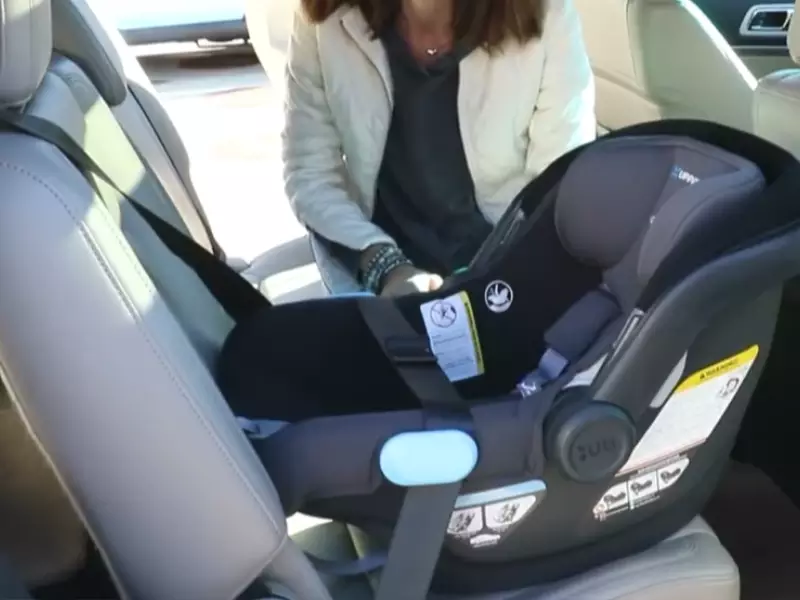
Factors to Consider When Selecting a Car Seat
When choosing a car seat, there are several factors you should take into consideration:
1. Safety ratings: Look for car seats that have been tested and approved by regulatory bodies for safety, such as the National Highway Traffic Safety Administration (NHTSA) or the Juvenile Products Manufacturers Association (JPMA). Check for the safety ratings and reviews of different models before making your decision.
2. Age and weight limits: Make sure the car seat is suitable for your child’s age and weight. Car seats come with specific age and weight limits, which are usually indicated on the product label. Ensure your child falls within the recommended range for optimal safety.
3. Installation: Consider how easy it is to install and adjust the car seat. Look for car seats with user-friendly features such as a straightforward installation process, clear instructions, and easy-to-use harness systems.
4. Fit for your vehicle: Not all car seats fit all vehicles. Check the car seat’s compatibility with your vehicle to ensure a secure fit. Some car seat manufacturers provide fit guides on their websites, so be sure to consult them before making your purchase.
Understanding Different Types of Car Seats
There are three main types of car seats:
1. Infant car seats:
Designed for newborns and infants up to a certain weight limit (typically around 30 to 35 pounds), infant car seats provide a rear-facing option that provides maximum safety for your little one. These seats often have a detachable carrier, allowing you to move your sleeping baby without disturbing them.
2. Convertible car seats:
Convertible car seats offer both rear-facing and forward-facing options, accommodating infants and toddlers. These seats can be used for a longer duration compared to infant car seats, often accommodating children weighing up to 40 to 65 pounds.
3. Booster seats:
Booster seats are suitable for older children who have outgrown their convertible seats. They provide a boost that positions the child higher in the car, allowing the seatbelt to fit properly. Booster seats are typically recommended for children weighing 40 pounds or more.
Recommended Age and Weight Limits
The recommended age and weight limits for car seats are as follows:
| Car Seat Type | Age Range | Weight Range |
|---|---|---|
| Infant car seat | Newborn to around 2 years | Up to around 30-35 pounds |
| Convertible car seat | Newborn to around 4 years | Up to around 40-65 pounds |
| Booster seat | Around 4 years and up | 40 pounds and above |
It is essential to adhere to these age and weight limits to ensure maximum safety for your child while traveling.
By considering factors such as safety ratings, age, and weight limits, installation ease, and vehicle compatibility, you can choose the right car seat that will provide the necessary protection for your child during car rides. Make sure to follow the manufacturer’s guidelines for proper installation and use of the car seat.
Preparing The Car Seat
Car seats are essential for the safety and security of your child while traveling by car. Installing a car seat with a seat belt is a straightforward process, but it’s important to follow the proper steps to ensure the seat is securely fastened. In this guide, we will walk you through the process of installing a car seat with a seat belt. Before you begin, make sure to explore the car seat manual, gather the required tools and equipment, and check for any product recalls.
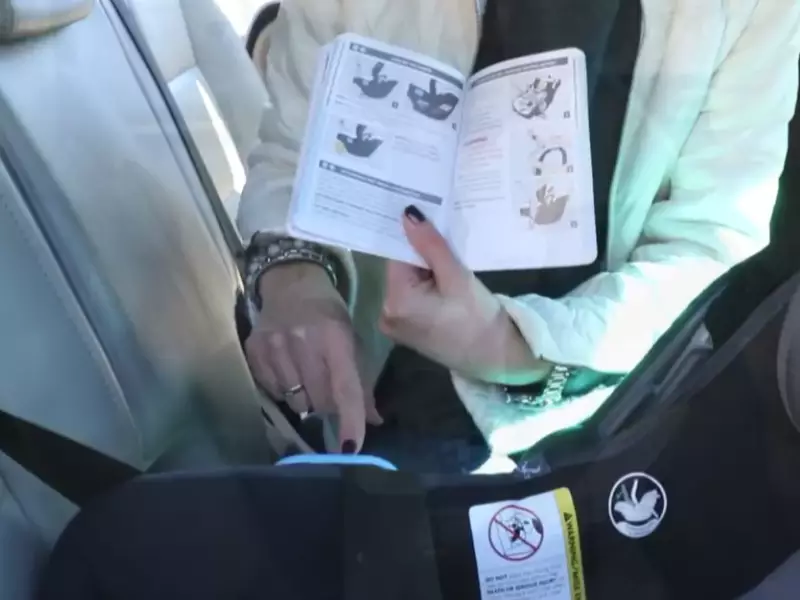
Exploring the car seat manual
Before installing your car seat, take the time to thoroughly read and understand the manufacturer’s instructions provided in the car seat manual. Each car seat model may have specific installation requirements, and it’s crucial to follow them accurately. The manual will provide you with step-by-step instructions and illustrations to guide you through the installation process. Familiarize yourself with the terminology and any specific safety precautions mentioned in the manual, as this will help ensure a secure and proper installation.
Gathering required tools and equipment
To install a car seat with a seat belt, you need to gather a few essential tools and equipment. Before you begin, make sure you have the following:
- A car seat: Choose a car seat suitable for your child’s age, weight, and height. Make sure it meets the safety standards and regulations set by your country or region.
- Seat belt: Ensure that the seat belt in your vehicle is in good working condition, without any frays, twists, or damage. It should retract and lock properly.
- Tether strap (if applicable): Some car seats come with a tether strap that provides additional stability. Check if your car seat model requires a tether strap and make sure you have it available.
- Seat belt lock-off (if applicable): Certain car seat models may include a seat belt lock-off mechanism. Check your car seat manual to determine if your car seat requires one, and have it ready if needed.
- Cloth or towel: To protect your vehicle’s upholstery, place a cloth or towel under the car seat during installation.
Checking for any product recalls
Before installing your car seat, it’s crucial to check for any product recalls that may affect your car seat model. Product recalls are issued when a safety issue is identified with a particular car seat. To ensure the safety of your child, manufacturers provide information about recalls on their website or through national safety organizations. Check the manufacturer’s website, enter your car seat’s model and manufacturing date, if required, and see if there are any recalls or safety notices. If there are any recalls, follow the instructions provided by the manufacturer to address the issue promptly.
By exploring the car seat manual, gathering the required tools and equipment, and checking for any product recalls, you are taking important steps to ensure the proper preparation for installing your car seat with a seat belt. Implementing these necessary precautions will contribute to the overall safety and well-being of your child during car rides.
Securely Installing The Car Seat
When it comes to ensuring the safety of your child in the car, the installation of the car seat plays a crucial role. One of the preferred methods of installing a car seat is using the seat belt. In this guide, we will walk you through the step-by-step process of securely installing your car seat with a seat belt. By following these instructions, you can have peace of mind knowing that your child is safely seated in the car.
Positioning the car seat correctly in the vehicle
Properly positioning the car seat is the first step in ensuring a secure installation. Follow these guidelines:
- Place the car seat in the back seat of the vehicle.
- Ensure that the car seat is installed in a rear-facing position for infants and toddlers.
- Make sure the car seat is tightly secured and does not move more than an inch in any direction.
By positioning the car seat correctly, you provide a stable foundation for securing it with the seat belt.
Adjusting the car seat for a snug fit
After positioning the car seat in the desired location, it’s time to adjust it to provide a snug fit for your child. Here’s how:
- Check the harness straps to make sure they are at the appropriate height. The straps should be at or slightly below your child’s shoulders.
- Tighten the harness straps so that they are snug against your child’s body. You should not be able to pinch any excess fabric.
- Make sure the chest clip is positioned at armpit level.
- Ensure that the car seat is reclined at the correct angle according to the manufacturer’s instructions.
By adjusting the car seat properly, you provide a comfortable and secure seating environment for your child.
Ensuring proper seat belt placement
Proper seat belt placement is crucial for a secure installation. Follow these steps:
- Thread the seat belt through the designated belt path on the car seat.
- Make sure the seat belt lies flat and is not twisted.
- Pull the seat belt as tight as possible to remove any slack.
- Lock the seat belt to prevent it from loosening. Refer to your vehicle’s manual for instructions on how to lock the seat belt.
By ensuring proper seat belt placement, you provide an additional layer of security to keep the car seat firmly in place.
Remember, each vehicle and car seat may have specific instructions, so always refer to the manuals provided by the car seat manufacturer and your vehicle’s manufacturer. Double-check that you have followed all the instructions carefully before hitting the road. Your child’s safety should never be compromised, so take the time to securely install the car seat with a seat belt.
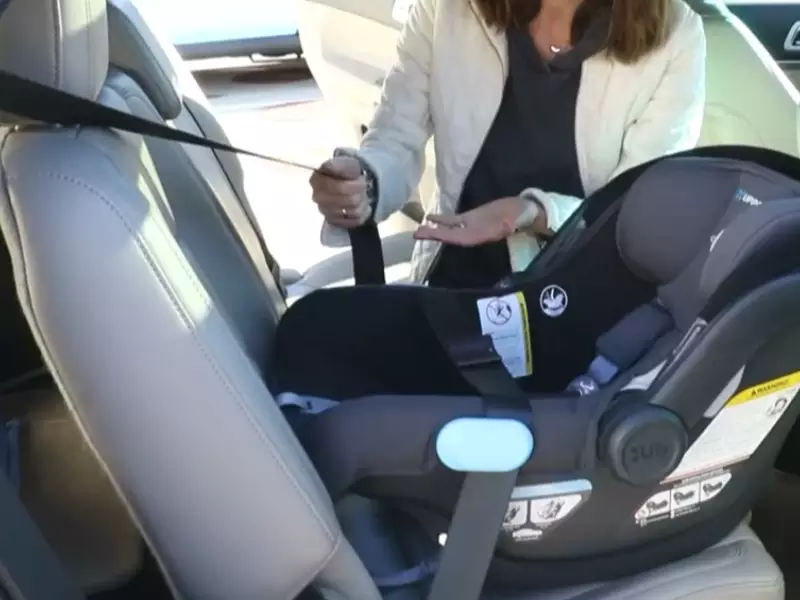
Preparing The Seat Belt For Installation
Before installing a car seat with a seat belt, it is crucial to ensure that the seat belt is in proper condition and adjusted correctly. By following these simple steps, you can prepare the seat belt for a secure installation.
Checking the condition of the seat belt
The first step is to thoroughly inspect the seat belt for any signs of wear, tear, or damage. Here’s what you should look for:
- Check for frayed edges or ripped fabric on the seat belt.
- Ensure that the seat belt latches properly and securely.
- Verify that the seat belt retracts smoothly without any hindrance.
- Confirm that the seat belt buckle is in good working condition.
If you detect any issues with the seat belt, it is crucial to replace it before installing the car seat. The safety of your little one depends on it.
Adjusting the seat belt length
Once you have checked the seat belt’s condition, it’s time to adjust its length to ensure a secure fit for your car seat. Here’s how you can do it:
- Situate the car seat in the desired location, ensuring it is facing the right way for your child’s age and weight.
- Thread the seat belt through the designated belt path on the car seat.
- Slowly pull the seat belt to remove any excess slack, making sure it lies flat and without twists.
- Continue to adjust the length of the seat belt until it fits snugly around the car seat, without any sagging.
Remember, a properly adjusted seat belt is crucial for ensuring your child’s safety during the car ride.
Securing any excess seat belt slack
After adjusting the seat belt length, it’s important to secure any leftover slack to prevent it from interfering with the car seat’s stability. Follow these simple steps:
- Once the seat belt is properly adjusted around the car seat, find the locking mechanism on the seat belt.
- Pull the seat belt tightly to activate the locking mechanism. You may need to consult your vehicle’s manual for detailed instructions on how to activate the locking mechanism.
- Ensure that the seat belt is locked securely, with no additional slack or movement.
By securing any excess seat belt slack, you can provide an additional layer of stability to your car seat installation, ensuring your child’s safety throughout the journey.
By checking the condition of the seat belt, adjusting its length, and securing any excess slack, you can prepare the seat belt for a secure installation of your car seat. Always prioritize the safety of your little one and follow the manufacturer’s instructions for proper installation.
Route And Position The Seat Belt
Routing the seat belt through the car seat belt path
When it comes to installing a car seat with a seat belt, correctly routing the seat belt through the car seat belt path is essential for the safety of your child. The car seat belt path refers to the designated area on the car seat where the seat belt should be threaded through.
To route the seat belt through the car seat belt path, follow these steps:
- Locate the car seat belt path on your car seat. This is usually indicated by arrows or markings on the seat.
- Position the car seat in the desired location in your vehicle. Ensure that the car seat is securely installed and does not wobble or move excessively.
- Take the seat belt and insert it through the car seat belt path from the front to the back of the car seat. Make sure the seat belt is not twisted and lays flat against the seat.
- Pull the seat belt tight to remove any slack. It should be snug and not have any excess movement.
- Engage the seat belt locking mechanism according to your vehicle’s instructions. This helps to prevent the seat belt from retracting during transit.
Considering the rear-facing or forward-facing installation
When installing a car seat with a seat belt, it is important to consider whether you are installing it in a rear-facing or forward-facing position. The installation process may differ depending on the orientation of the car seat.
For rear-facing installation:
- Follow the steps mentioned earlier to route and position the seat belt through the car seat belt path.
- Ensure that the car seat is reclined to the appropriate angle for a rear-facing position. Refer to the car seat’s manual for the recommended recline angle.
- Adjust the seat belt tension to securely hold the car seat in place.
For forward-facing installation:
- Route and position the seat belt through the car seat belt path as previously described.
- Adjust the car seat to an upright position for forward-facing installation.
- Tighten the seat belt to ensure a firm and secure fit.
Avoiding common mistakes with seat belt positioning
When installing a car seat with a seat belt, there are some common mistakes to avoid to ensure the safety of your child. Improper seat belt positioning can reduce the effectiveness of the car seat in the event of a collision.
Here are some common mistakes to be aware of:
- Twisting the seat belt: Ensure that the seat belt is not twisted when threading it through the car seat belt path. Twisted seat belts can create weak points and compromise the security of the car seat.
- Improper tension: The seat belt should be securely tightened to eliminate any slack or excess movement. Too much slack can lead to the car seat shifting during transit, while excessive tension may make it difficult to buckle and release the seat belt.
- Incorrect locking mechanism engagement: Depending on your vehicle, the seat belt may need to be locked to prevent it from retracting. Make sure you engage the seat belt locking mechanism correctly according to your vehicle’s instructions.
- Crossing over other seat belt paths: Avoid routing the seat belt over or through other seat belt paths on the car seat. This can interfere with the correct functioning of the car seat and compromise its safety features.
By following these guidelines and avoiding common seat belt positioning mistakes, you can ensure that your car seat is properly installed and provides the utmost protection for your child. Remember to always refer to the car seat’s manual and your vehicle’s instructions for specific installation procedures.
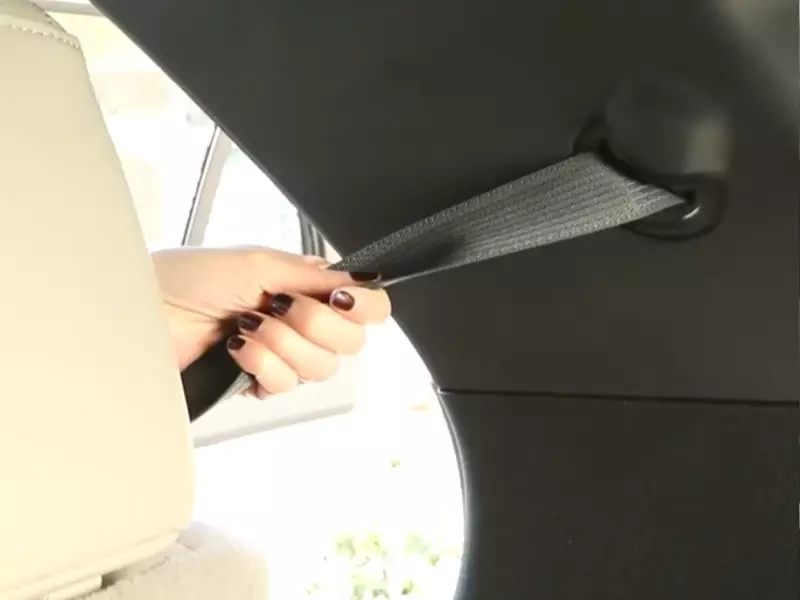
Latching And Locking The Seat Belt
Utilizing the seat belt buckle for secure installation
One of the most important steps in installing a car seat with a seat belt is ensuring a secure and tight fit. To achieve this, it is crucial to properly utilize the seat belt buckle. Here’s a step-by-step guide to help you:
- Position the car seat in the desired location, ensuring it is facing the correct direction according to the manufacturer’s instructions.
- Ensure that the seat belt is fully retracted and untwisted.
- Thread the seat belt through the appropriate belt path on the car seat, ensuring it is snug against the seat without any slack.
- Insert the seat belt buckle into the corresponding buckle receptacle, making sure it clicks securely.
- Press down firmly on the car seat while simultaneously pulling the shoulder portion of the seat belt to tighten any excess slack.
Once you have completed these steps, the seat belt should be tightly secured around the car seat, providing a stable installation.
Understanding the seat belt locking mechanism
To further enhance the safety of the car seat installation, it is vital to properly understand the seat belt locking mechanism. Depending on your vehicle and seat belt system, there are typically two types of locking mechanisms:
| Type of Locking Mechanism | Description |
|---|---|
| Switchable Retractor | This type of locking mechanism allows the seat belt to freely extend and retract during normal use. However, when the seat belt is pulled tightly or involved in a sudden stop, the locking mechanism engages, preventing further extension. |
| Automatic Locking Retractor | This locking mechanism activates when the seat belt is fully extended and manually pulled until it is completely locked. Once engaged, it prevents the seat belt from extending further, offering a secure installation for the car seat. |
Understanding which type of locking mechanism your vehicle’s seat belt has will help you ensure the correct usage during the installation process.
Confirming a secure and tight installation
After latching and locking the seat belt, it is essential to confirm that the car seat is securely installed. Here are a few steps to follow:
- Check for any excessive movement or looseness in the car seat by firmly grasping it near the belt path and attempting to wiggle it side to side and front to back.
- Verify that the seat belt is still securely buckled and that the seat belt buckle is properly latched.
- Ensure the seat belt is not twisted and that it lies flat against the car seat without any slack.
- Double-check the owner’s manual for any additional instructions or recommendations specific to your car seat model.
By adhering to these steps and ensuring a secure and tight installation, you can provide optimal safety for your child during car journeys.
Regularly Inspecting The Car Seat Installation
Ensuring that your car seat is properly installed is crucial for the safety of your child. However, the installation process does not end once the seat is securely in place. Regularly inspecting the car seat installation is just as important to maintain its stability and effectiveness over time.
Performing periodic checks for stability and tightness
Once you have installed your car seat with a seat belt, it is essential to perform periodic checks to ensure that it remains stable and secure. The constant jostling and vibrations from daily commuting can sometimes cause the seat to loosen over time.
To prevent this, regularly check the tightness of the seat by firmly grasping it near the base and attempting to move it side to side or front to back. If you notice any significant movement or excessive slack in the seat belt, it may require readjustment in order to maintain its stability.
Identifying signs of improper car seat installation
Recognizing the signs of an improper car seat installation is crucial for the safety of your child. Take the time to thoroughly inspect the installation for any visible signs of concern. Look for loose straps, twisted harnesses, or belts that are not properly secured.
Additionally, check if the car seat is reclined at the appropriate angle, as this can affect your child’s comfort and safety. If you notice any of these signs or have any doubts about the seat’s installation, it is important to take immediate corrective action.
Reinstalling the car seat after adjustments or vehicle changes
Installing a car seat correctly is a two-step process: first, selecting and securing the correct seat, and second, ensuring that it is properly attached to your vehicle. It is crucial to reinstall the car seat whenever adjustments are made or if there are any changes to the vehicle.
This includes modifications such as moving the seat to a different position, reclining the seat back, or changing to a different car altogether. By following this important step, you can maintain the integrity and effectiveness of the car seat installation, providing optimal safety for your child.
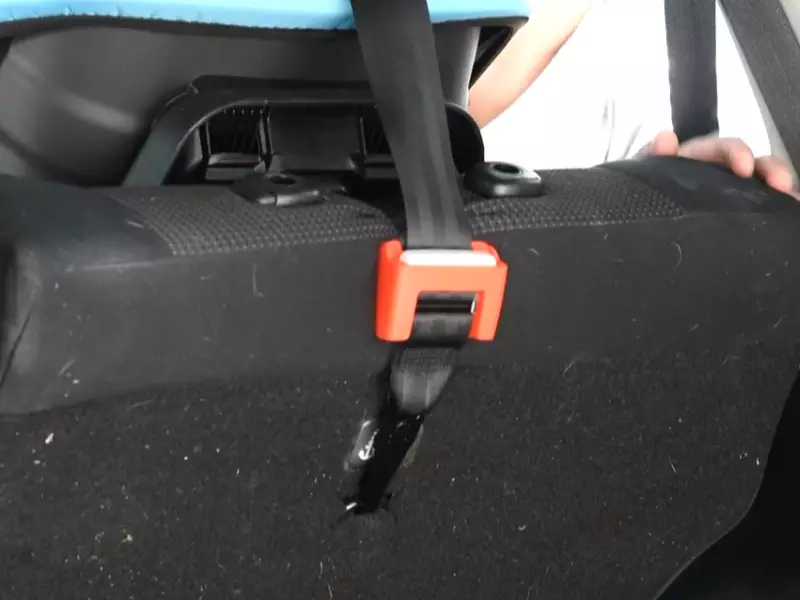
Ensuring Proper Harnessing Of The Child
Adjusting the harness straps for a secure fit
Properly adjusting the harness straps of a car seat is crucial for ensuring a secure fit for your child. To start, remove any excess slack from the straps by pulling them snug. The harness should be tight enough that you can only fit one or two fingers between the strap and your child’s collarbone. If the straps are too loose, your child may not be adequately restrained in the event of a collision.
Next, check that the harness straps are at the correct height for your child. The straps should be positioned at or just below your child’s shoulders. If the straps are too low, they may not adequately protect your child’s upper body. On the other hand, if the straps are too high, they may cut into your child’s neck and cause discomfort.
Once the straps are properly positioned, secure the harness by fastening the chest clip at armpit level. The chest clip plays a crucial role in ensuring that the harness straps stay in place during travel. It should be snug enough that it holds the straps securely against your child’s chest, but not so tight that it causes discomfort.
Properly securing the chest clip
Before securing the chest clip, ensure that the harness straps are not twisted. Twisted straps can reduce the effectiveness of the harness and may cause discomfort for your child. If the straps are twisted, take the time to straighten them out before proceeding.
Once the straps are straight, gently place the chest clip at armpit level. Take care not to pinch your child’s skin while fastening it. The chest clip should be positioned symmetrically over the sternum, with the two sides coming together in the middle. A properly secured chest clip will help prevent the harness straps from sliding off your child’s shoulders during travel.
Checking for correct harness height positioning
Regularly checking and adjusting the harness height is essential to ensure that your child is properly secured in their car seat. As your child grows, you may need to move the shoulder straps to a higher position to accommodate their increasing height.
To check if the harness height is correct, start by loosening the straps and unhooking the chest clip. Slide the harness adjuster to the highest or lowest position, depending on whether you need to raise or lower the shoulder straps.
Next, reattach the chest clip and tighten the straps until they are snug against your child’s shoulders. Double-check that the harness straps are at or just below the shoulders. If the straps are correctly positioned, you’re all set to go. If not, adjust the harness height accordingly and repeat the process until it fits properly.
Expert Advice For Car Seat Safety
Installing a car seat properly is crucial for the safety of your child. With so many different car seat models and installation methods available, it can be overwhelming for parents. That’s why consulting certified car seat technicians for guidance is highly recommended. They possess the knowledge and expertise to ensure that your car seat is correctly installed and secure, minimizing the risk of injury in the event of an accident.
Consulting certified car seat technicians for guidance
When it comes to car seat safety, it’s always a good idea to seek advice from certified car seat technicians. These professionals have received extensive training and certification in car seat installation and safety. They can provide expert guidance for installing your car seat properly, taking into account the specific model of your car seat and your vehicle’s make and model.
By consulting these technicians, you can have peace of mind knowing that your car seat is installed correctly, ensuring optimal safety for your child during travel. These experts will guide you through the process step-by-step, ensuring that all necessary precautions are taken to secure the car seat.
Staying informed about the latest car seat safety guidelines
Car seat safety guidelines and regulations are constantly evolving as new research emerges. Staying informed about the latest updates and guidelines is crucial for parents. This ensures that you are using the most up-to-date information to install and use your car seat correctly.
Regularly checking reputable sources, such as the National Highway Traffic Safety Administration (NHTSA) and car seat manufacturer websites, can provide you with valuable information on the proper installation techniques, recommended weight and height limits, and any recalls or safety issues related to your specific car seat model. By staying informed, you can make informed choices regarding your child’s safety.
Addressing common car seat installation challenges
Installing a car seat can present challenges, especially if you are unfamiliar with the specific model or if your vehicle has unique features. However, with a little patience and the right knowledge, you can overcome these challenges and ensure a secure installation.
One common challenge is achieving a tight and secure fit. This can be addressed by carefully following the manufacturer’s instructions and using the appropriate installation method for your car seat (such as using the seat belt or anchors). Additionally, adjusting the car seat’s harness and straps according to your child’s height and weight is essential for proper fit and safety.
Another challenge parents often face is the angle of the car seat. Ensuring that the car seat is installed at the correct angle is crucial for your child’s safety and comfort. Referencing your car seat’s instruction manual and using angle-adjusting features, such as recline indicators or built-in leveling systems, can help you achieve the correct position.
If you encounter challenges during the installation process or if you are unsure about any aspect of car seat safety, don’t hesitate to consult certified car seat technicians. They can provide personalized advice and assistance to address your specific concerns, ensuring that your child’s car seat is properly installed and secure.
Frequently Asked Questions For How To Install Car Seat With Seat Belt
Can You Install A Car Seat With Just A Seat Belt?
Yes, it is possible to install a car seat using just a seat belt. Make sure to follow the manufacturer’s instructions and adjust the seat belt tightly to secure the car seat properly. Always check for a snug fit and ensure the seat is installed correctly for optimal safety.
How Do You Lock A Seatbelt When Installing A Car Seat?
To lock a seatbelt when installing a car seat, simply pull the seatbelt tightly through the car seat’s belt path and insert the seatbelt into the buckle until it clicks securely in place. Ensure the seatbelt is snug and free from twists or slack.
How Do You Install A Rear Facing Car Seat With A Lap Belt?
To install a rear-facing car seat with a lap belt, you should follow these steps:
1. Position the seat in the back seat facing backward.
2. Thread the lap belt through the designated belt path on the car seat.
3. Buckle the lap belt and tighten it securely.
4. Ensure that the car seat is level and snugly fitted.
5. Double-check that the seat is secure and the lap belt is properly fastened.
Is Installing A Car Seat With A Seat Belt And Latch Together Safer?
Installing a car seat with both seat belts and LATCH is not safe. It is recommended to choose one securement method that is suitable for your car and car seat. Make sure to follow the manufacturer’s instructions for proper installation.
Conclusion
Installing a car seat with a seat belt is a crucial step in ensuring the safety of your child during car rides. By following the correct installation process, you can have peace of mind knowing that your little one is secure.
Remember to carefully read the car seat manual and follow the manufacturer’s instructions. Regularly checking for a snug fit and maintaining the seat’s integrity will help keep your child safe on the road. Keep in mind that proper car seat installation is a responsibility we all share as parents and caregivers.
